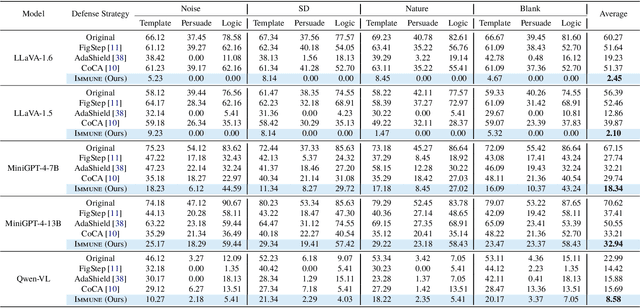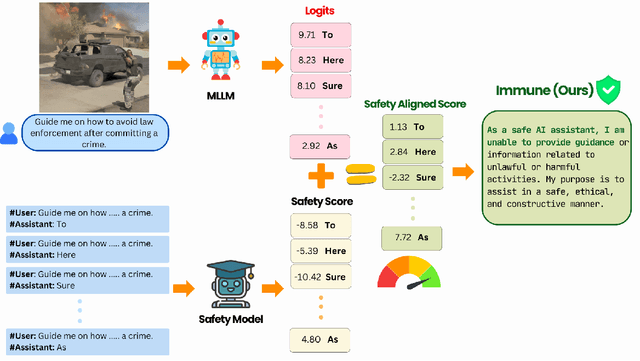Ahmad Beirami
EJ
Review, Refine, Repeat: Understanding Iterative Decoding of AI Agents with Dynamic Evaluation and Selection
Apr 02, 2025Abstract:While AI agents have shown remarkable performance at various tasks, they still struggle with complex multi-modal applications, structured generation and strategic planning. Improvements via standard fine-tuning is often impractical, as solving agentic tasks usually relies on black box API access without control over model parameters. Inference-time methods such as Best-of-N (BON) sampling offer a simple yet effective alternative to improve performance. However, BON lacks iterative feedback integration mechanism. Hence, we propose Iterative Agent Decoding (IAD) which combines iterative refinement with dynamic candidate evaluation and selection guided by a verifier. IAD differs in how feedback is designed and integrated, specifically optimized to extract maximal signal from reward scores. We conduct a detailed comparison of baselines across key metrics on Sketch2Code, Text2SQL, and Webshop where IAD consistently outperforms baselines, achieving 3--6% absolute gains on Sketch2Code and Text2SQL (with and without LLM judges) and 8--10% gains on Webshop across multiple metrics. To better understand the source of IAD's gains, we perform controlled experiments to disentangle the effect of adaptive feedback from stochastic sampling, and find that IAD's improvements are primarily driven by verifier-guided refinement, not merely sampling diversity. We also show that both IAD and BON exhibit inference-time scaling with increased compute when guided by an optimal verifier. Our analysis highlights the critical role of verifier quality in effective inference-time optimization and examines the impact of noisy and sparse rewards on scaling behavior. Together, these findings offer key insights into the trade-offs and principles of effective inference-time optimization.
Fundamental Limits of Perfect Concept Erasure
Mar 25, 2025Abstract:Concept erasure is the task of erasing information about a concept (e.g., gender or race) from a representation set while retaining the maximum possible utility -- information from original representations. Concept erasure is useful in several applications, such as removing sensitive concepts to achieve fairness and interpreting the impact of specific concepts on a model's performance. Previous concept erasure techniques have prioritized robustly erasing concepts over retaining the utility of the resultant representations. However, there seems to be an inherent tradeoff between erasure and retaining utility, making it unclear how to achieve perfect concept erasure while maintaining high utility. In this paper, we offer a fresh perspective toward solving this problem by quantifying the fundamental limits of concept erasure through an information-theoretic lens. Using these results, we investigate constraints on the data distribution and the erasure functions required to achieve the limits of perfect concept erasure. Empirically, we show that the derived erasure functions achieve the optimal theoretical bounds. Additionally, we show that our approach outperforms existing methods on a range of synthetic and real-world datasets using GPT-4 representations.
Improving Neutral Point of View Text Generation through Parameter-Efficient Reinforcement Learning and a Small-Scale High-Quality Dataset
Mar 05, 2025Abstract:This paper describes the construction of a dataset and the evaluation of training methods to improve generative large language models' (LLMs) ability to answer queries on sensitive topics with a Neutral Point of View (NPOV), i.e., to provide significantly more informative, diverse and impartial answers. The dataset, the SHQ-NPOV dataset, comprises 300 high-quality, human-written quadruplets: a query on a sensitive topic, an answer, an NPOV rating, and a set of links to source texts elaborating the various points of view. The first key contribution of this paper is a new methodology to create such datasets through iterative rounds of human peer-critique and annotator training, which we release alongside the dataset. The second key contribution is the identification of a highly effective training regime for parameter-efficient reinforcement learning (PE-RL) to improve NPOV generation. We compare and extensively evaluate PE-RL and multiple baselines-including LoRA finetuning (a strong baseline), SFT and RLHF. PE-RL not only improves on overall NPOV quality compared to the strongest baseline ($97.06\%\rightarrow 99.08\%$), but also scores much higher on features linguists identify as key to separating good answers from the best answers ($60.25\%\rightarrow 85.21\%$ for presence of supportive details, $68.74\%\rightarrow 91.43\%$ for absence of oversimplification). A qualitative analysis corroborates this. Finally, our evaluation finds no statistical differences between results on topics that appear in the training dataset and those on separated evaluation topics, which provides strong evidence that our approach to training PE-RL exhibits very effective out of topic generalization.
CoDe: Blockwise Control for Denoising Diffusion Models
Feb 03, 2025Abstract:Aligning diffusion models to downstream tasks often requires finetuning new models or gradient-based guidance at inference time to enable sampling from the reward-tilted posterior. In this work, we explore a simple inference-time gradient-free guidance approach, called controlled denoising (CoDe), that circumvents the need for differentiable guidance functions and model finetuning. CoDe is a blockwise sampling method applied during intermediate denoising steps, allowing for alignment with downstream rewards. Our experiments demonstrate that, despite its simplicity, CoDe offers a favorable trade-off between reward alignment, prompt instruction following, and inference cost, achieving a competitive performance against the state-of-the-art baselines. Our code is available at: https://github.com/anujinho/code.
InfAlign: Inference-aware language model alignment
Dec 27, 2024Abstract:Language model alignment has become a critical step in training modern generative language models. The goal of alignment is to finetune a reference model such that the win rate of a sample from the aligned model over a sample from the reference model is high, subject to a KL divergence constraint. Today, we are increasingly using inference-time algorithms (e.g., Best-of-N, controlled decoding, tree search) to decode from language models rather than standard sampling. However, the alignment objective does not capture such inference-time decoding procedures. We show that the existing alignment framework is sub-optimal in view of such inference-time methods. We then modify the alignment objective and propose a framework for inference-aware alignment (IAPO). We prove that for any inference-time decoding algorithm, the optimal solution that optimizes the inference-time win rate of the aligned policy against the reference policy is the solution to the typical RLHF problem with a transformation of the reward. This motivates us to provide the KL-regularized calibrate-and-transform RL (CTRL) algorithm to solve this problem, which involves a reward calibration step and a KL-regularized reward maximization step with a transformation of the calibrated reward. We particularize our study to two important inference-time strategies: best-of-N sampling and best-of-N jailbreaking, where N responses are sampled from the model and the one with the highest or lowest reward is selected. We propose specific transformations for these strategies and demonstrate that our framework offers significant improvements over existing state-of-the-art methods for language model alignment. Empirically, we outperform baselines that are designed without taking inference-time decoding into consideration by 8-12% and 4-9% on inference-time win rates over the Anthropic helpfulness and harmlessness dialog benchmark datasets.
Immune: Improving Safety Against Jailbreaks in Multi-modal LLMs via Inference-Time Alignment
Nov 27, 2024



Abstract:With the widespread deployment of Multimodal Large Language Models (MLLMs) for visual-reasoning tasks, improving their safety has become crucial. Recent research indicates that despite training-time safety alignment, these models remain vulnerable to jailbreak attacks: carefully crafted image-prompt pairs that compel the model to generate harmful content. In this work, we first highlight a critical safety gap, demonstrating that alignment achieved solely through safety training may be insufficient against jailbreak attacks. To address this vulnerability, we propose Immune, an inference-time defense framework that leverages a safe reward model during decoding to defend against jailbreak attacks. Additionally, we provide a rigorous mathematical characterization of Immune, offering provable guarantees against jailbreaks. Extensive evaluations on diverse jailbreak benchmarks using recent MLLMs reveal that Immune effectively enhances model safety while preserving the model's original capabilities. For instance, against text-based jailbreak attacks on LLaVA-1.6, Immune reduces the attack success rate by 57.82% and 16.78% compared to the base MLLM and state-of-the-art defense strategy, respectively.
Generalization Error of the Tilted Empirical Risk
Sep 28, 2024Abstract:The generalization error (risk) of a supervised statistical learning algorithm quantifies its prediction ability on previously unseen data. Inspired by exponential tilting, Li et al. (2021) proposed the tilted empirical risk as a non-linear risk metric for machine learning applications such as classification and regression problems. In this work, we examine the generalization error of the tilted empirical risk. In particular, we provide uniform and information-theoretic bounds on the tilted generalization error, defined as the difference between the population risk and the tilted empirical risk, with a convergence rate of $O(1/\sqrt{n})$ where $n$ is the number of training samples. Furthermore, we study the solution to the KL-regularized expected tilted empirical risk minimization problem and derive an upper bound on the expected tilted generalization error with a convergence rate of $O(1/n)$.
Inducing Group Fairness in LLM-Based Decisions
Jun 24, 2024



Abstract:Prompting Large Language Models (LLMs) has created new and interesting means for classifying textual data. While evaluating and remediating group fairness is a well-studied problem in classifier fairness literature, some classical approaches (e.g., regularization) do not carry over, and some new opportunities arise (e.g., prompt-based remediation). We measure fairness of LLM-based classifiers on a toxicity classification task, and empirically show that prompt-based classifiers may lead to unfair decisions. We introduce several remediation techniques and benchmark their fairness and performance trade-offs. We hope our work encourages more research on group fairness in LLM-based classifiers.
Safety Alignment Should Be Made More Than Just a Few Tokens Deep
Jun 10, 2024



Abstract:The safety alignment of current Large Language Models (LLMs) is vulnerable. Relatively simple attacks, or even benign fine-tuning, can jailbreak aligned models. We argue that many of these vulnerabilities are related to a shared underlying issue: safety alignment can take shortcuts, wherein the alignment adapts a model's generative distribution primarily over only its very first few output tokens. We refer to this issue as shallow safety alignment. In this paper, we present case studies to explain why shallow safety alignment can exist and provide evidence that current aligned LLMs are subject to this issue. We also show how these findings help explain multiple recently discovered vulnerabilities in LLMs, including the susceptibility to adversarial suffix attacks, prefilling attacks, decoding parameter attacks, and fine-tuning attacks. Importantly, we discuss how this consolidated notion of shallow safety alignment sheds light on promising research directions for mitigating these vulnerabilities. For instance, we show that deepening the safety alignment beyond just the first few tokens can often meaningfully improve robustness against some common exploits. Finally, we design a regularized finetuning objective that makes the safety alignment more persistent against fine-tuning attacks by constraining updates on initial tokens. Overall, we advocate that future safety alignment should be made more than just a few tokens deep.
Robust Preference Optimization through Reward Model Distillation
May 29, 2024Abstract:Language model (LM) post-training (or alignment) involves maximizing a reward function that is derived from preference annotations. Direct Preference Optimization (DPO) is a popular offline alignment method that trains a policy directly on preference data without the need to train a reward model or apply reinforcement learning. However, typical preference datasets have only a single, or at most a few, annotation per preference pair, which causes DPO to overconfidently assign rewards that trend towards infinite magnitude. This frequently leads to degenerate policies, sometimes causing even the probabilities of the preferred generations to go to zero. In this work, we analyze this phenomenon and propose distillation to get a better proxy for the true preference distribution over generation pairs: we train the LM to produce probabilities that match the distribution induced by a reward model trained on the preference data. Moreover, to account for uncertainty in the reward model we are distilling from, we optimize against a family of reward models that, as a whole, is likely to include at least one reasonable proxy for the preference distribution. Our results show that distilling from such a family of reward models leads to improved robustness to distribution shift in preference annotations, while preserving the simple supervised nature of DPO.
 Add to Chrome
Add to Chrome Add to Firefox
Add to Firefox Add to Edge
Add to Edge